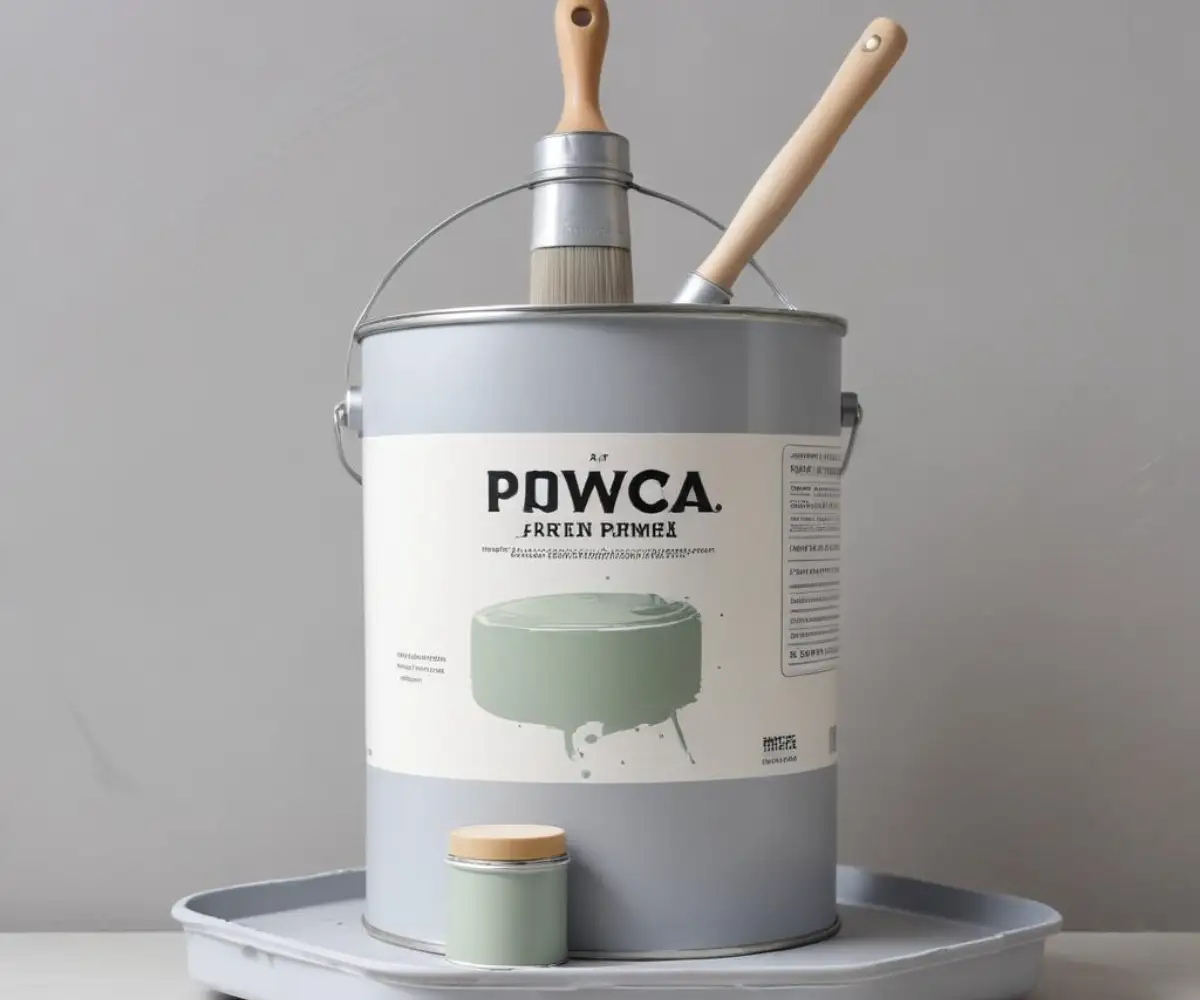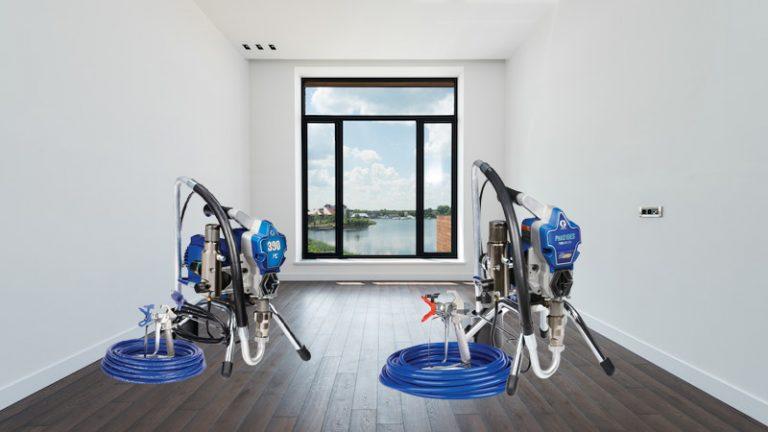How Much PVA Primer Do I Need? Stop Guessing Now
You’ve hung the last sheet of drywall, taped and mudded the seams, and sanded everything to a smooth, promising finish. A pristine canvas awaits, but one critical question stands between you and the perfect paint job: how much PVA primer do I need? This isn’t just a minor detail; it’s a pivotal project-planning step that can make the difference between a professional-grade finish and a blotchy, frustrating mess that wastes both time and money.
Buying too little primer means a frustrating mid-project trip to the hardware store, often with wet rollers and lost momentum. Buying too much feels like pouring money down the drain. The core of the problem is uncertainty. New drywall is notoriously thirsty, and failing to properly calculate your needs can sabotage your results before you even open the first can of paint.
You'll Learn About
Why Guessing Your Primer Needs Is a Costly Mistake
Before diving into the calculations, it’s crucial to understand what PVA (polyvinyl acetate) primer is and why it’s non-negotiable for new drywall. Think of fresh drywall as a giant sponge with inconsistent porosity. The paper surface and the joint compound (mud) absorb liquids at different rates. Applying paint directly to this surface results in an uneven, blotchy appearance known as “flashing,” where the taped seams are visible through the final coat.
A quality PVA primer is specifically formulated to seal these porous surfaces, creating a uniform, stable base for your topcoat. This ensures your paint adheres properly and dries to an even sheen. Skimping on this step is a classic DIY blunder that leads to needing more expensive topcoats to fix the unevenness, ultimately costing you more.
The Simple Formula for Primer Calculation
At its heart, figuring out how much PVA primer you need is a straightforward process. The basic formula you’ll use is a simple division problem:
Total Wall Square Footage / Coverage Rate Per Gallon = Number of Gallons Needed
Let’s break down each part of this equation to ensure you get an accurate estimate every single time.
Step 1: Accurately Calculate Your Wall Square Footage
First, you need to determine the total area of the surfaces you’ll be priming. This requires some simple measurements and basic math. Don’t worry, you don’t need to be a math whiz to get this right.
To find the square footage of your walls, you will:
- Measure the perimeter of the room: Use a tape measure to find the length of each wall you plan to paint. Add these lengths together to get the total perimeter. For a standard rectangular room, you can simply add the length of two adjacent walls and multiply by two.
- Measure the height of the walls: Measure from the floor to the ceiling. For rooms with slanted ceilings, use the average height.
- Multiply the perimeter by the height: This calculation gives you the total wall square footage.
Example Calculation:
Let’s say you have a standard 12-foot by 15-foot room with 8-foot ceilings.
- Perimeter: (12 ft + 15 ft) x 2 = 54 ft
- Wall Height: 8 ft
- Total Wall Area: 54 ft x 8 ft = 432 square feet
Now, you need to account for areas you won’t be painting, like doors and windows. While you can measure each one and subtract it for perfect accuracy, a general rule of thumb works well for most projects:
- Subtract 20 square feet for each standard door.
- Subtract 15 square feet for each standard window.
If our example room has two windows and one door:
- Total Wall Area: 432 sq ft
- Subtract for Door: -20 sq ft
- Subtract for Windows: -30 sq ft (15 sq ft x 2)
- Paintable Surface Area: 382 square feet
Step 2: Understanding PVA Primer Coverage Rates
The second piece of our formula is the coverage rate. Most manufacturers state that one gallon of PVA primer will cover between 300 and 400 square feet. This range is a crucial detail. The actual coverage you get depends heavily on the condition and texture of your surface.
Always check the can of the specific primer you purchase. The manufacturer’s listed coverage rate is your best starting point. For new, unsealed drywall, it’s wise to be conservative and use the lower end of the estimate (e.g., 300-350 sq ft per gallon) because the surface will absorb more product.
Continuing our example with a paintable area of 382 square feet and a conservative coverage rate of 350 sq ft per gallon:
- 382 sq ft / 350 sq ft per gallon = 1.09 gallons
This result means you will need to purchase more than a single gallon. In this scenario, buying two single gallons or one gallon and one quart would be the most practical choice to ensure you have enough.
Critical Factors That Influence How Much Primer You’ll Use
The basic calculation is a great start, but real-world projects have variables. Several factors can significantly increase the amount of primer you’ll need, and failing to account for them can leave you short.
Surface Texture: The Thirstiest Culprit
The texture of your walls is arguably the biggest factor influencing primer consumption. A perfectly smooth, level 5 finish will require far less primer than a heavily textured one.
- Smooth Drywall: A standard, flat surface will hew closely to the manufacturer’s coverage estimates.
- Orange Peel or Knockdown Texture: These light textures increase the surface area, requiring about 10-15% more primer.
- Popcorn or Acoustic Texture: Heavily textured surfaces like popcorn ceilings are extremely porous and can require up to 25-30% more primer to seal properly.
Pro Tip: When priming textured surfaces, a thicker nap roller (1/2″ to 3/4″) is essential to get the primer into all the crevices, but it will also use more product per square foot.
Application Method: Roller vs. Sprayer
How you apply the primer also affects your total consumption. Each method has its own efficiency profile.
- Rolling and Brushing: This is the most common DIY method. It offers good control and minimizes waste, putting most of the product directly onto the wall.
- Airless Sprayer: Using a sprayer provides a faster, more even finish, which is great for large areas or heavily textured surfaces. However, you can lose 20-30% of your primer to overspray, so you must factor this into your purchase amount.

The Great Debate: One Coat or Two?
For new drywall, one good, even coat of a quality PVA primer is typically sufficient to seal the surface. The goal of PVA primer isn’t to create a perfectly opaque white surface; it’s normal to see the drywall mud and tape showing through. Its job is to seal, not to hide.
However, there are situations where a second coat might be necessary:
- Extremely Porous Surfaces: If the first coat seems to disappear completely into the wall, a second coat may be needed to create a proper seal.
- High-Contrast Color Changes: If you plan to paint a very light color over a dark-colored drywall paper, a second coat of primer can help establish a neutral base.
- Uneven Application: If your first coat is patchy or has visible roller marks, a light sanding followed by a second coat can ensure a uniform base for your paint.
For most new drywall projects, planning for two coats is often recommended to ensure a flawless finish. The first coat acts as the primary sealer, while the second evens out any remaining inconsistencies in porosity. If you notice any blotchy or uneven spots after the first coat has dried, a second coat is a wise investment.
Quick Reference: Estimated Primer Needs
To simplify your planning, here is a handy table estimating the amount of PVA primer needed for common room sizes with standard 8-foot ceilings. These estimates are for one coat; double them if you plan on applying two.
| Room Size (Example) | Approx. Wall Sq. Ft. (Minus 1 Door, 2 Windows) | Primer for Smooth Walls (1 Coat) | Primer for Textured Walls (1 Coat) |
|---|---|---|---|
| Small Bathroom (5′ x 8′) | 178 sq ft | 2 Quarts | 2-3 Quarts |
| Average Bedroom (12′ x 12′) | 334 sq ft | 1 Gallon | 1.25 Gallons |
| Large Living Room (15′ x 20′) | 510 sq ft | 1.5 Gallons | 1.75 – 2 Gallons |
| Open Concept Area | 700+ sq ft | 2+ Gallons | 2.5+ Gallons |
Pro Tips for a Flawless Priming Job
Calculating the right amount is half the battle; proper application is the other. Here are some expert tips to ensure your priming job sets you up for success.
1. Always Prep the Surface
Never apply primer to a dusty wall. After sanding, wipe down all surfaces with a damp cloth or use a vacuum with a brush attachment to remove all drywall dust. Dust prevents the primer from adhering correctly, leading to peeling paint down the road.
2. Buy a Little Extra
The golden rule of painting is to always buy about 10-15% more primer and paint than you calculate. This small buffer accounts for accidental spills, unexpected touch-ups, or surfaces that are thirstier than anticipated. Having a little extra from the same batch is far better than running out and having to make a last-minute purchase.
3. Don’t Skimp on Quality
While PVA primer is generally inexpensive, there can be a difference in quality between brands. A slightly more expensive, higher-solids primer may cover better and seal more effectively, saving you from needing a second coat. On a related note, a home maintenance issue like discovering a squirrel in a drain pipe could lead to unexpected wall repairs, reinforcing the need for quality materials during restoration.
4. Use the Right Tools
For smooth drywall, a 3/8-inch or 1/2-inch nap roller cover is ideal. For textured walls, step up to a 1/2-inch or 3/4-inch nap to ensure complete coverage. Using the right tools will make the job faster and provide more consistent results. This principle applies to other household tasks as well, whether it’s having the correct tool for fireplace gas valve cover plate removal or understanding the mechanics of the best non-computerized washing machines.
5. Allow Proper Drying Time
Patience is key. Check the manufacturer’s instructions for the recommended drying time before you can apply your topcoat, which is typically just a few hours. Rushing this step can cause the primer to lift and mix with the paint, ruining your finish.
Conclusion: Prime with Confidence, Not guesswork
Determining how much PVA primer you need doesn’t have to be a guessing game. By following the simple formula—calculating your square footage and dividing by the primer’s coverage rate—you can approach your project with confidence. Always remember to adjust for critical factors like wall texture and application method, and err on the side of buying a little extra.
Properly priming your new drywall is the foundational step that ensures a beautiful, long-lasting paint job. Taking the time to get this step right saves you from the frustration of a flawed finish and the extra expense of fixing it. So measure twice, calculate once, and get ready to transform your space with a perfect coat of paint.

